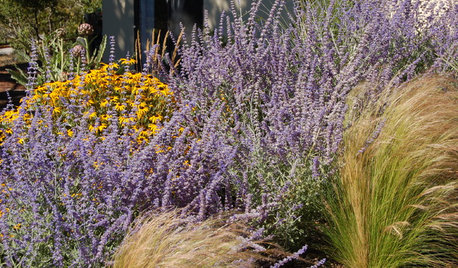Premixed seed or Mix yourself?
beverlywv
19 years ago
Related Stories

GARDENING GUIDESHow to Plant a New Lawn From Seed
Choose from more grass varieties and save money over sod by starting your lawn from seed
Full Story
LANDSCAPE DESIGNFind Yourself in an Epic Garden in the Shade
Feeling hot and tired gardening in the sun? The world of shade gardening beckons you to its cool mystery
Full Story
GARDENING GUIDESHow to Prep Your Ground for a Healthy New Lawn
Seed or sod that falls on weedy, lumpy soil is a wasted effort. Follow these steps to ensure that your new lawn will thrive
Full Story
HOUZZ TVHouzz TV: How to Make and Plant a Veggie Box
See how to start edibles from seed, then transfer the seedlings to a box on stilts to make harvesting more fun
Full Story
FALL GARDENINGBe Your Own Wildflower Nursery
Gather seeds from your garden in fall, and you'll have a selection of plants for next year — without spending a dime
Full Story
CALIFORNIA GARDENINGSouthern California Gardener's November Checklist
Sow wildflower seeds while ye may, give berries some love and pay attention to produce for garden veggies all winter long
Full Story0

PETSSo You're Thinking About Getting a Dog
Prepare yourself for the realities of training, cost and the impact that lovable pooch might have on your house
Full Story
GARDENING FOR BUTTERFLIESGarden for Wildlife to Reap Rich Rewards
When you plant with animals and insects in mind, you make gardening easier, the planet healthier and yourself more present
Full Story
DECLUTTERINGFoolproof Ways to Declutter Your Kitchen
If you find yourself fumbling through cupboards to find what you’re looking for, it’s time to take action with these simple steps
Full Story
MOST POPULAR8 Ways to Add a Load of Color to Your Laundry Room
Give a tedious task a boost by surrounding yourself with a bold, happy hue
Full Story





RUDE_RUDY
ahughes798
Related Professionals
Clark Landscape Architects & Landscape Designers · El Mirage Landscape Contractors · Fort Myers Landscape Contractors · Lyndhurst Landscape Contractors · Salem Landscape Contractors · Soddy Daisy Landscape Contractors · View Park-Windsor Hills Landscape Contractors · Wallingford Landscape Contractors · North Hills Landscape Contractors · Solana Beach Decks, Patios & Outdoor Enclosures · Adrian Decks, Patios & Outdoor Enclosures · Hendersonville Decks, Patios & Outdoor Enclosures · Norman Decks, Patios & Outdoor Enclosures · Rogers Decks, Patios & Outdoor Enclosures · Highland Decks, Patios & Outdoor Enclosuresflowerfarmer
ahughes798
flowerfarmer
john_mo
veronicastrum
ahughes798
RUDE_RUDY
joepyeweed
ahughes798
MikeB
john_mo
ahughes798